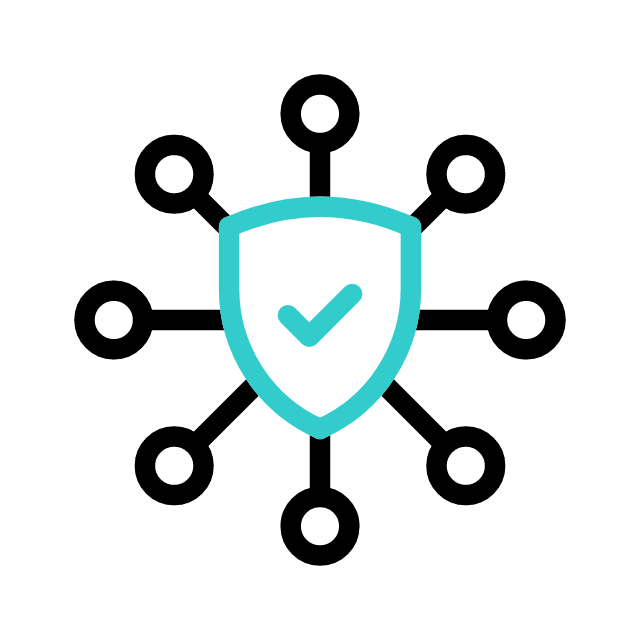
Benefits of Quality Management
- Customer Satisfaction: Quality management focuses on meeting or exceeding customer expectations by consistently delivering products and services that meet high standards of quality and reliability. Satisfied customers are more likely to be loyal, repeat customers and advocates for the brand.
- Improved Reputation: Organizations that prioritize quality management build a reputation for excellence and reliability in the marketplace. A strong reputation for quality can differentiate a company from its competitors and attract new customers seeking high-quality products and services.
- Cost Reduction: Quality management helps organizations identify and eliminate inefficiencies, defects, and waste in their processes, leading to cost savings through improved productivity, reduced rework, and lower warranty and customer service costs.
- Increased Efficiency: Quality management practices, such as process optimization, standardization, and continuous improvement, enhance operational efficiency and effectiveness. By streamlining workflows and eliminating bottlenecks, organizations can achieve higher levels of productivity and performance.
- Risk Mitigation: Quality management systems help organizations identify and mitigate risks related to product defects, non-compliance, and customer dissatisfaction. By proactively addressing quality issues, organizations can minimize the likelihood of costly recalls, lawsuits, and reputational damage.
- Compliance with Standards: Quality management ensures that organizations comply with industry standards, regulations, and certifications related to product quality, safety, and environmental management. Compliance with standards enhances credibility, facilitates market access, and demonstrates commitment to best practices.
- Employee Engagement: Quality management fosters a culture of accountability, teamwork, and continuous improvement among employees. Engaged employees are more motivated, productive, and committed to delivering high-quality work that meets customer requirements.
- Innovation: Quality management encourages innovation and creativity by empowering employees to identify opportunities for improvement and implement new ideas and solutions. By fostering a culture of innovation, organizations can stay ahead of the competition and drive sustainable growth.
- Supply Chain Collaboration: Quality management extends beyond organizational boundaries to include suppliers, partners, and stakeholders in the supply chain. Collaborative quality management practices help build strong relationships, ensure supply chain transparency, and mitigate risks associated with supplier quality issues.
- Long-Term Sustainability: Quality management contributes to the long-term sustainability of organizations by fostering customer loyalty, driving operational excellence, and supporting continuous improvement. Sustainable quality management practices enable organizations to adapt to changing market dynamics and remain competitive in the long run.
What is quality management?
Quality management is a systematic approach to ensuring that products, services, and processes consistently meet or exceed customer requirements and expectations. It encompasses a set of principles, methodologies, tools, and practices aimed at achieving and maintaining high levels of quality throughout an organization.
Key components of quality management include:
- Quality Planning: Establishing quality objectives, standards, and requirements based on customer needs and expectations. Quality planning involves defining quality metrics, setting targets, and developing strategies to achieve quality goals.
- Quality Assurance: Implementing processes, procedures, and controls to ensure that products and services meet established quality standards and comply with relevant regulations and specifications. Quality assurance activities include inspections, audits, testing, and certification.
- Quality Control: Monitoring and verifying product and service quality at various stages of production or delivery to identify and correct defects, errors, or deviations from quality standards. Quality control involves sampling, measurement, analysis, and feedback mechanisms to maintain consistent quality levels.
- Continuous Improvement: Emphasizing a culture of continuous improvement and learning to enhance processes, systems, and performance over time. Continuous improvement methodologies such as Six Sigma, Lean, and Total Quality Management (TQM) focus on identifying root causes of quality issues, implementing corrective actions, and preventing recurrence.
- Customer Focus: Placing customer needs, preferences, and satisfaction at the center of quality management efforts. Understanding customer requirements, gathering feedback, and addressing customer complaints are essential for delivering products and services that meet or exceed customer expectations.
- Employee Involvement: Engaging employees at all levels of the organization in quality management initiatives to harness their knowledge, skills, and creativity. Empowered employees play a vital role in identifying quality improvement opportunities, implementing solutions, and driving organizational change.
- Supplier Management: Collaborating with suppliers and partners to ensure that raw materials, components, and services meet quality standards and specifications. Effective supplier management involves selecting reliable suppliers, establishing quality agreements, and monitoring supplier performance.
- Data-Driven Decision Making: Using data, metrics, and key performance indicators (KPIs) to measure, analyze, and evaluate quality performance. Data-driven decision making enables organizations to identify trends, patterns, and areas for improvement, leading to more informed and effective decision making.
- Risk Management: Identifying, assessing, and mitigating risks that may impact product or service quality, safety, or reliability. Risk management strategies help organizations anticipate potential quality issues, prevent defects, and minimize the impact of quality-related incidents.
- Leadership Commitment: Demonstrating leadership commitment and support for quality management initiatives by providing resources, training, and organizational alignment. Strong leadership fosters a culture of quality, accountability, and continuous improvement throughout the organization.
Overall, quality management is essential for organizations to build trust, reputation, and customer loyalty, drive operational excellence, and achieve sustainable business success in today’s competitive marketplace.



























